
The Rogers Commission Report was written by a Presidential Commission charged with investigating the Space Shuttle Challenger disaster during its 10th mission, STS-51-L. The report, released and submitted to President Ronald Reagan on June 9, 1986, both determined the cause of the disaster that took place 73 seconds after liftoff, and urged NASA to improve and install new safety features on the shuttles and in its organizational handling of future missions.

STS-93 in 1999 marked the 95th launch of the Space Shuttle, the 26th launch of Columbia, and the 21st night launch of a Space Shuttle. Eileen Collins became the first female shuttle Commander on this flight. Its primary payload was the Chandra X-ray Observatory.

Henry Warren Hartsfield Jr. was a United States Air Force Colonel and NASA astronaut who logged over 480 hours in space. He was inducted into the United States Astronaut Hall of Fame in 2006.

Robert Donald Cabana is a former Associate Administrator of the National Aeronautics and Space Administration (NASA), NASA astronaut and non-flight-eligible management astronaut), and is a veteran of four Space Shuttle flights. He served as Chief of the Astronaut Office from 1994 to 1997 and as director of the John F. Kennedy Space Center from 2008 to 2021. He is also a former naval flight officer and naval aviator in the United States Marine Corps.

George David Low was an American aerospace executive and a NASA astronaut. With undergraduate degrees in physics and mechanical engineering and a master's degree in aeronautics and astronautics, he worked in the Jet Propulsion Laboratory (JPL) at the California Institute of Technology in the early 80's, before being picked as an astronaut candidate by NASA in 1984. In addition to holding some technical assignments, he logged more than 700 hours in space, before he left NASA in 1996 to pursue a career in the private sector. He was the son of George M. Low, the manager of the Apollo Spacecraft Program Office, and later, the 14th president of Rensselaer Polytechnic Institute.
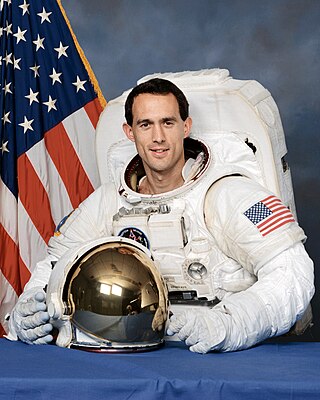
James Hansen Newman is an American physicist and a former NASA astronaut who flew on four Space Shuttle missions.

Stephen Scot Oswald is an American former pilot and NASA astronaut.

Paul William Richards is an American engineer and a former NASA astronaut. He flew aboard one Space Shuttle mission in 2001.
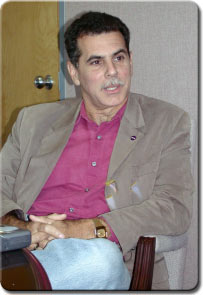
Miguel Rodríguez is the Chief of the Integration Office of the Cape Canaveral Spaceport Management Office.
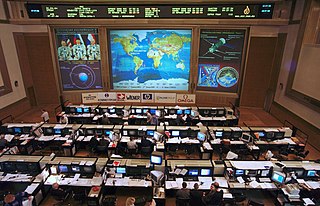
Flight controllers are personnel who aid space flight by working in such Mission Control Centers as NASA's Mission Control Center or ESA's European Space Operations Centre. Flight controllers work at computer consoles and use telemetry to monitor various technical aspects of a space mission in real-time. Each controller is an expert in a specific area and constantly communicates with additional experts in the "back room". The flight director, who leads the flight controllers, monitors the activities of a team of flight controllers, and has overall responsibility for success and safety.

Linda Ham is a former Constellation Program Transition and Technology Infusion Manager at NASA. She was formerly the program integration manager in the NASA Space Shuttle Program Office and acting manager for launch integration. In this position, she chaired the mission management team for all shuttle flights between 2001 and 2003, including shuttle mission STS-107 that ended with the catastrophic destruction of Columbia upon its planned reentry into the Earth's atmosphere.

Glynn Stephen Lunney was an American NASA engineer. An employee of NASA since its creation in 1958, Lunney was a flight director during the Gemini and Apollo programs, and was on duty during historic events such as the Apollo 11 lunar ascent and the pivotal hours of the Apollo 13 crisis. At the end of the Apollo program, he became manager of the Apollo–Soyuz Test Project, the first collaboration in spaceflight between the United States and the Soviet Union. Later, he served as manager of the Space Shuttle program before leaving NASA in 1985 and later becoming a vice president of the United Space Alliance.
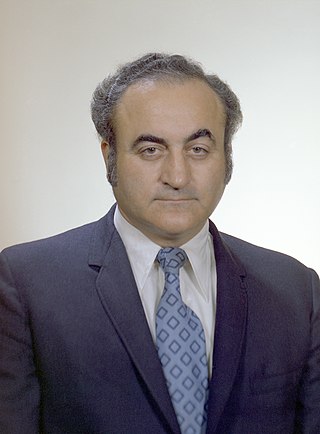
Rocco Anthony Petrone was an American mechanical engineer, U.S. Army officer and NASA official. He served as director of launch operations at NASA's Kennedy Space Center (KSC) from 1966 to 1969, as Apollo program director at NASA Headquarters from 1969 to 1973, as third director of NASA's Marshall Space Flight Center from 1973 to 1974, and as NASA Associate Administrator from 1974 until his retirement from NASA in 1975.

James Robert Thompson Jr., known as J.R. Thompson, was the fifth director of the NASA Marshall Space Flight Center located in Huntsville, Alabama. He served as director from September 29, 1986, to July 6, 1989. Thompson also served as NASA's deputy director from July 6, 1989, to November 8, 1991.

Jerrol Wayne Littles was the eighth director of the NASA Marshall Space Flight Center located in Huntsville, Alabama. He served as director from February 3, 1996, to January 3, 1998.
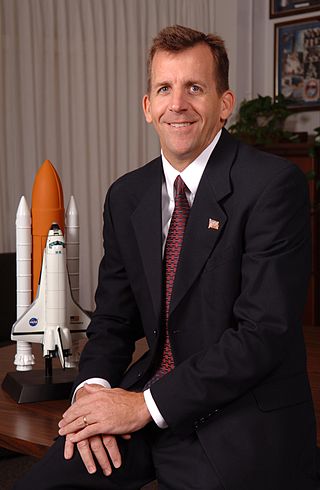
LeRoy Edward Cain is an American aerospace engineer who worked for NASA as a flight director, launch integration manager and deputy manager of the Space Shuttle Program. Cain may be best known to the public from footage and documentaries showing his work as the entry flight director for STS-107, the mission that ended in the catastrophic disintegration of Space Shuttle Columbia, February 1, 2003. Cain issued the famous "Lock the doors" command, initiating contingency procedures in mission control for the first time since the Space Shuttle Challenger disaster 17 years earlier.

William H. Gerstenmaier is an aerospace engineer and policymaker who is Vice President, Build and Flight Reliability at SpaceX. He previously served as NASA's Associate Administrator for Human Exploration and Operations between 2005 and July 10, 2019. While in that role, he was described as "arguably the most influential person when it comes to US spaceflight." Prior to being Associate Administrator, Gerstenmaier served as the International Space Station Office Program Manager, at Johnson Space Center, a position he began in June 2002. He spent a total of four decades with NASA.

Robert M. Lightfoot Jr. is former Acting Administrator of the National Aeronautics and Space Administration (NASA), serving from January 20, 2017 until April 23, 2018. Succeeding Charles Bolden, Lightfoot became the space agency's acting Associate Administrator on March 5, 2012. That job became permanent on September 25, 2012. He had previously served as the eleventh Director of the NASA Marshall Space Flight Center in Huntsville, Alabama, from March 2009 until his promotion in March 2012. On March 12, 2018 he announced his retirement from NASA effective April 30, 2018.

The retirement of NASA's Space Shuttle fleet took place from March to July 2011. Discovery was the first of the three active Space Shuttles to be retired, completing its final mission on March 9, 2011; Endeavour did so on June 1. The final shuttle mission was completed with the landing of Atlantis on July 21, 2011, closing the 30-year Space Shuttle program.


















